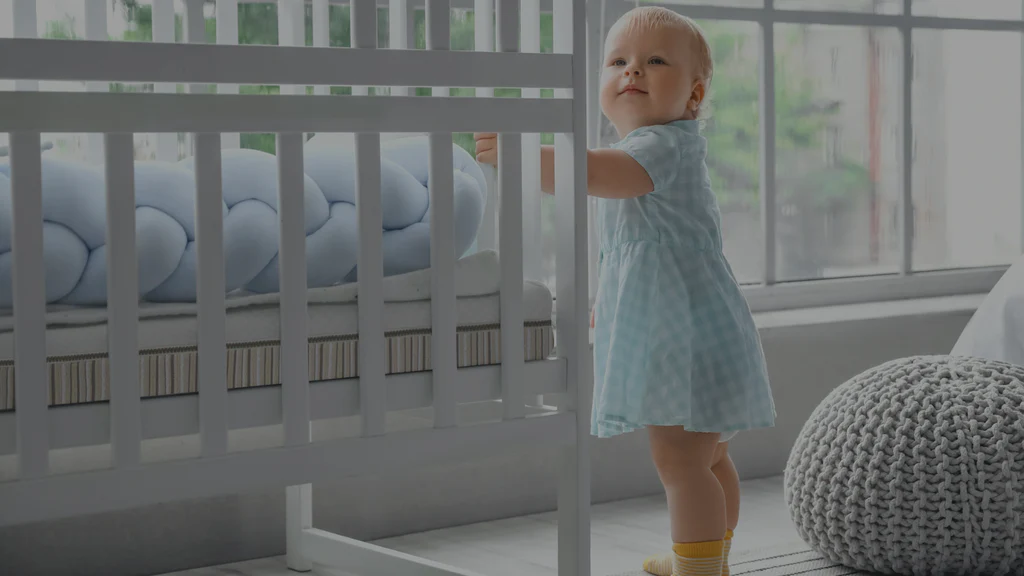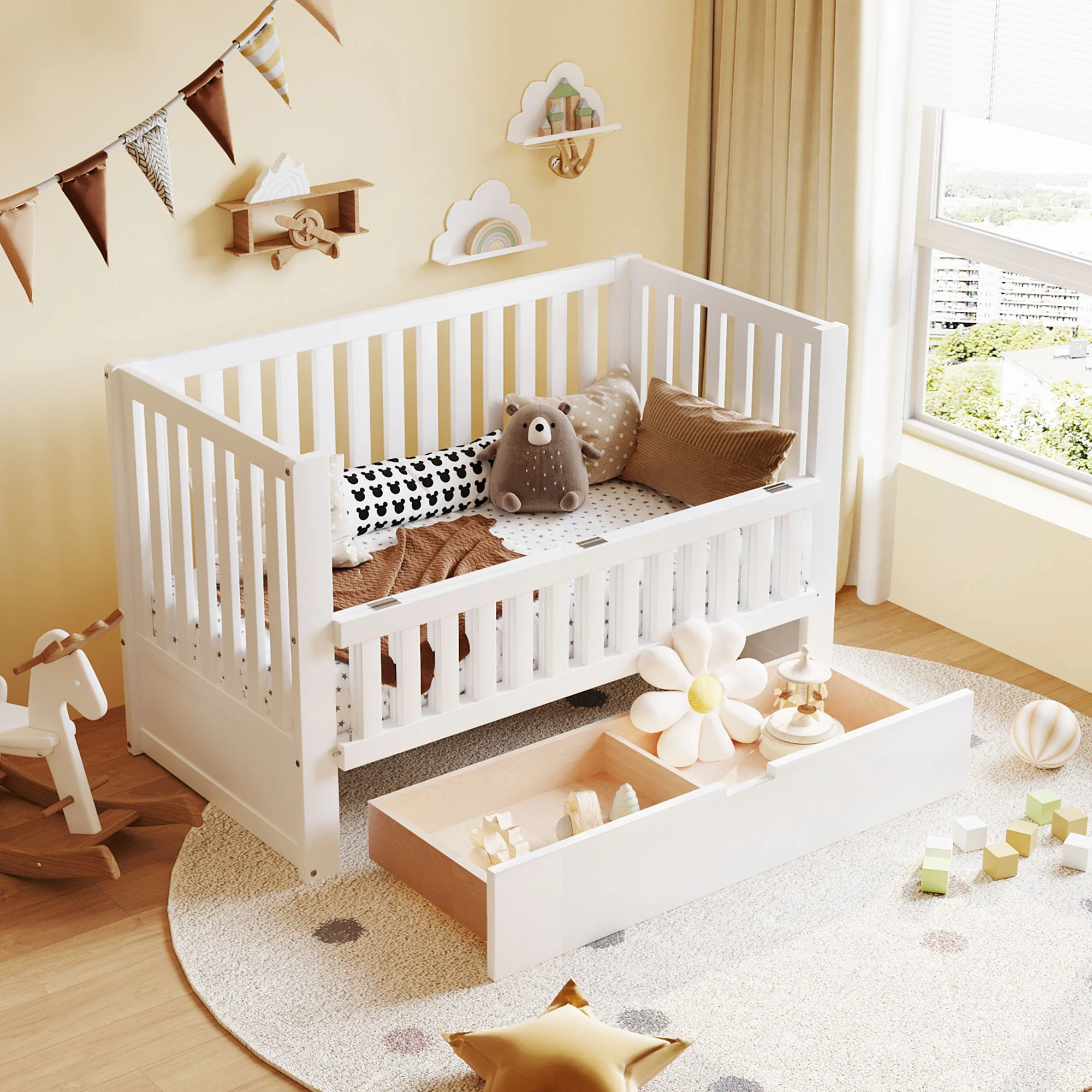I. Introduction
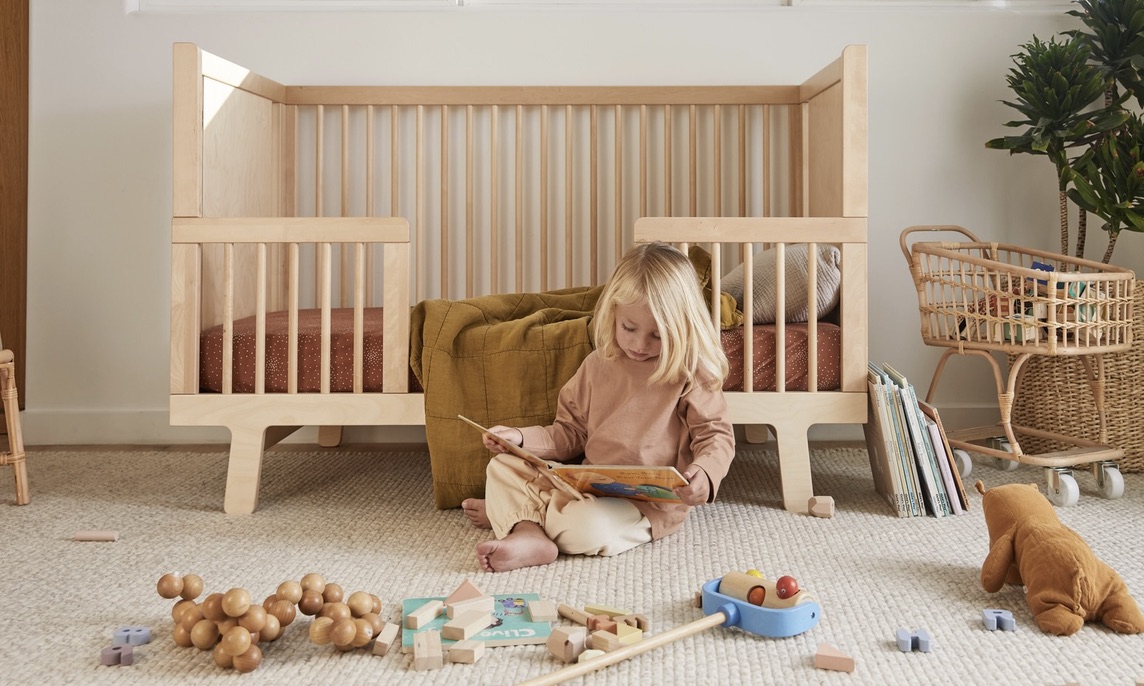
A. Importance of Transitioning from Crib to Toddler Bed Transitioning from a crib to a toddler bed is an important milestone in a child’s development. It signifies their growth and transition to a more independent sleep environment. It also promotes safety and comfort as children outgrow the confines of a crib.
B. Factors to Consider Before Making the Transition Before embarking on the transition, there are several factors to consider, such as your child’s age, developmental readiness, and physical abilities. Additionally, assessing their interest and readiness for a big-kid bed is crucial for a successful transition.
II. Signs that It’s Time for the Transition
A. Climbing out of the Crib One telltale sign that it’s time to transition to a toddler bed is if your child attempts to climb out of the crib. This can pose safety risks, and transitioning to a bed with lower sides or guardrails can ensure their safety.
B. Showing Interest in a Big-Kid Bed If your child shows curiosity about big-kid beds or expresses a desire to sleep in one, it may indicate that they are ready for the transition. Pay attention to their interest and use it as an opportunity to introduce the concept of a toddler bed.
C. Age and Developmental Milestones While age is not the sole determining factor, it can provide a general guideline for transitioning to a toddler bed. Most children transition between the ages of 2 and 3, but it ultimately depends on their individual readiness and development.
III. Preparing for the Transition
A. Choosing the Right Toddler Bed Selecting the right toddler bed is essential for a successful transition. Consider factors such as safety features, durability, and design. Choose a bed that meets safety standards, has guardrails, and a comfortable mattress to ensure your child’s safety and comfort.
B. Preparing the Room for the Transition Make the room conducive to the transition by rearranging furniture, removing hazards, and creating a welcoming space. Consider decorating the room with your child’s favorite theme or characters to make it an exciting and inviting environment.
C. Communicating with Your Child About the Change Involve your child in the process by discussing the transition with them. Use age-appropriate language to explain why they are transitioning and answer any questions they may have. Engage them in the decision-making process, such as choosing bedding or decorations, to make them feel more invested in the transition.
IV. Making the Transition
A. Gradual Transition Approach
- Introducing the Toddler Bed During Naptime Start by introducing the toddler bed during naptime. Allow your child to experience short periods of sleep in the new bed to familiarize themselves with it. Stay nearby or check on them regularly to provide comfort and support.
- Moving on to Night-Time Sleep in the Toddler Bed Once your child is comfortable napping in the toddler bed, gradually transition them to night-time sleep in the new bed. Follow their usual bedtime routine and offer reassurance and support as needed. Be patient and understanding during this adjustment period.
B. Direct Transition Approach
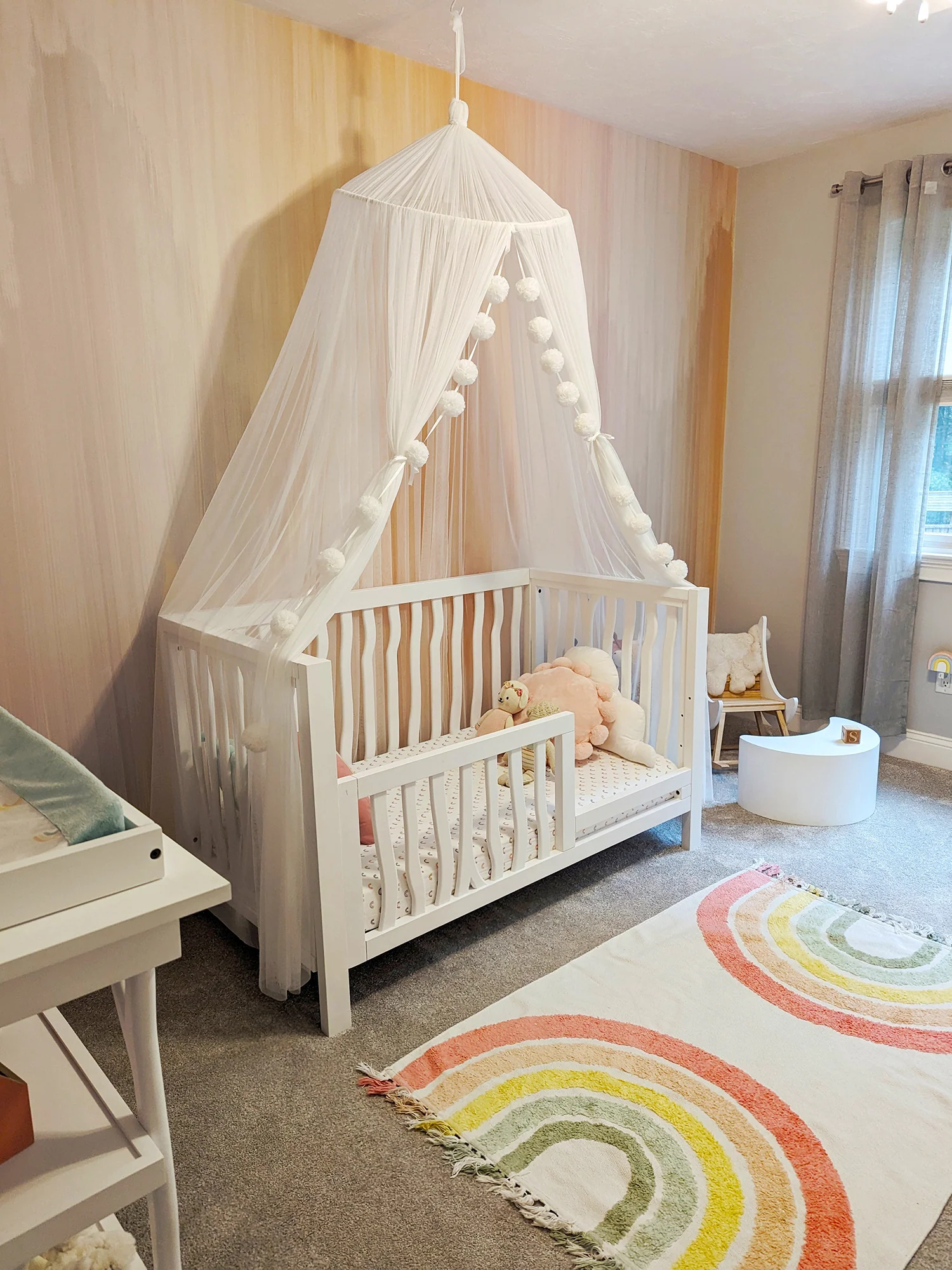
- Explaining the Change to Your Child If your child is ready, you can opt for a direct transition approach. Explain the change in a positive and encouraging manner, highlighting the benefits of sleeping in a big-kid bed. Reassure them that you will be nearby if they need anything during the night.
- Establishing New Bedtime Routines With the transition to a toddler bed, establish new bedtime routines to help your child feel secure and comfortable. This may include activities such as reading a book together, singing a lullaby, or having a conversation about their day. Consistency and predictability will help your child adjust to the new routine.
V. Challenges and Solutions
A. Resistance to the Change
- Gentle Encouragement and Reassurance When your child shows resistance to transitioning from a crib to a toddler bed, it’s important to provide gentle encouragement and reassurance. Communicate with your child about the benefits of the transition, such as having more freedom and independence. Use positive language and talk about the exciting new bed they will have. Show enthusiasm and excitement, as children often pick up on their parents’ emotions.
- Creating a Positive Sleep Environment To alleviate resistance, create a positive sleep environment in the new toddler bed. Let your child choose comfortable bedding or a favorite stuffed animal to make the bed more inviting. Incorporate soothing colors and soft lighting in the room. Consider playing soft background music or using a white noise machine to create a calming ambiance. By making the environment appealing, your child may feel more comfortable and willing to embrace the change.
B. Regressions in Sleep Patterns

- Consistency and Routine Transitioning to a toddler bed can sometimes disrupt your child’s sleep patterns, leading to regressions. Establishing a consistent bedtime routine can help your child adjust and settle into their new sleep environment. Maintaining a consistent bedtime and wake-up time will help regulate their internal clock and promote better sleep. Stick to familiar routines, such as reading a bedtime story or saying goodnight to favorite toys. By providing stability and predictability, you can minimize disruptions in sleep.
- Addressing Any Underlying Issues If your child is experiencing regressions in sleep patterns, it’s important to address any underlying issues that may be contributing to the disruption. External factors such as teething, illness, or changes in the household can affect your child’s sleep. Address these issues by providing comfort and additional support during this transition period. Offer extra cuddles, soothing techniques, or even consult with a healthcare professional if needed. By addressing any underlying concerns, you can help your child feel more secure and facilitate a smoother transition.
VI. Ensuring a Smooth Transition
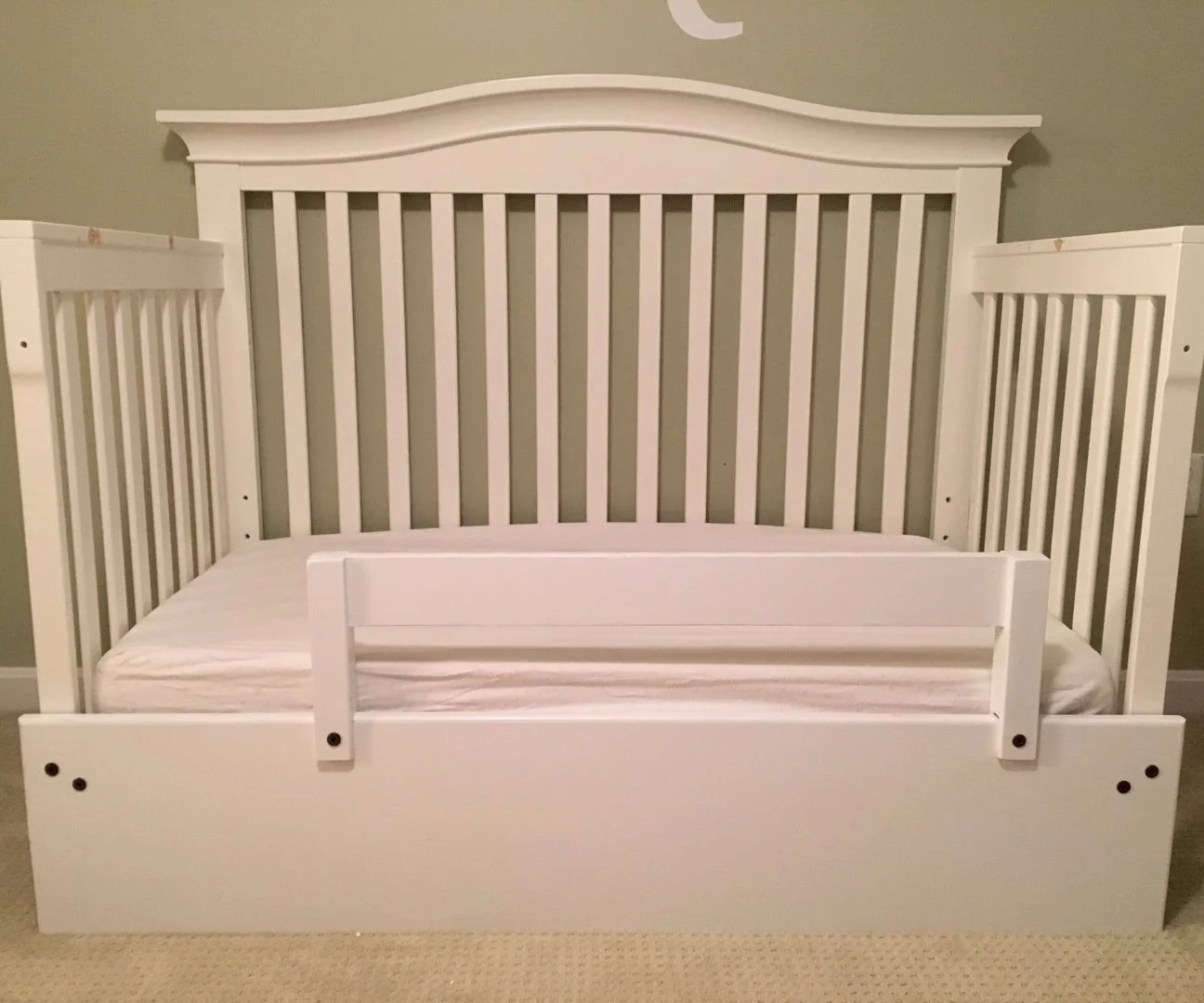
A. Creating a Safe Sleep Environment Before your child begins sleeping in their new toddler bed, it’s essential to create a safe sleep environment. Make sure the bed is set up properly, with guardrails or safety rails, if needed. Ensure there are no hazards or obstacles that could pose a risk to your child’s safety. Anchor furniture properly to prevent tipping and ensure cords and blinds are safely out of reach. By creating a safe sleep environment, you can alleviate any potential safety concerns and ensure peace of mind.
B. Monitoring Sleep Patterns and Adjusting as Needed During the transition, closely monitor your child’s sleep patterns and adjust your approach as necessary. Pay attention to any signs of discomfort, anxiety, or resistance. If your child is having difficulty falling asleep or staying asleep in the new bed, consider making gradual adjustments to the routine or environment. Observe their behavior and adjust elements such as bedtime rituals, bedtime snacks, or room temperature to create a more comfortable sleep environment. Being flexible and responsive to your child’s needs will help facilitate a smoother transition.
C. Offering Comfort and Reassurance During the Transition Transitions can be challenging for children, so it’s important to offer comfort and reassurance during this period. Respond to any fears or insecurities with understanding and empathy. Provide extra attention, reassurance, and physical comfort through hugs, kisses, and cuddles. Assure your child that you are nearby and available if they need you during the night. By offering comfort and reassurance, you can help your child feel secure and supported during this transitional phase.
In conclusion, navigating the challenges of transitioning from a crib to a toddler bed requires patience, understanding, and creativity. By gently encouraging and reassuring your child, creating a positive sleep environment, maintaining consistency and routine, addressing underlying issues, and offering comfort and reassurance, you can help ensure a smooth transition. Remember, every child is unique, so be flexible and responsive to their individual needs. With your support and guidance, your child will adjust to their new bed and continue to enjoy restful and peaceful sleep.
